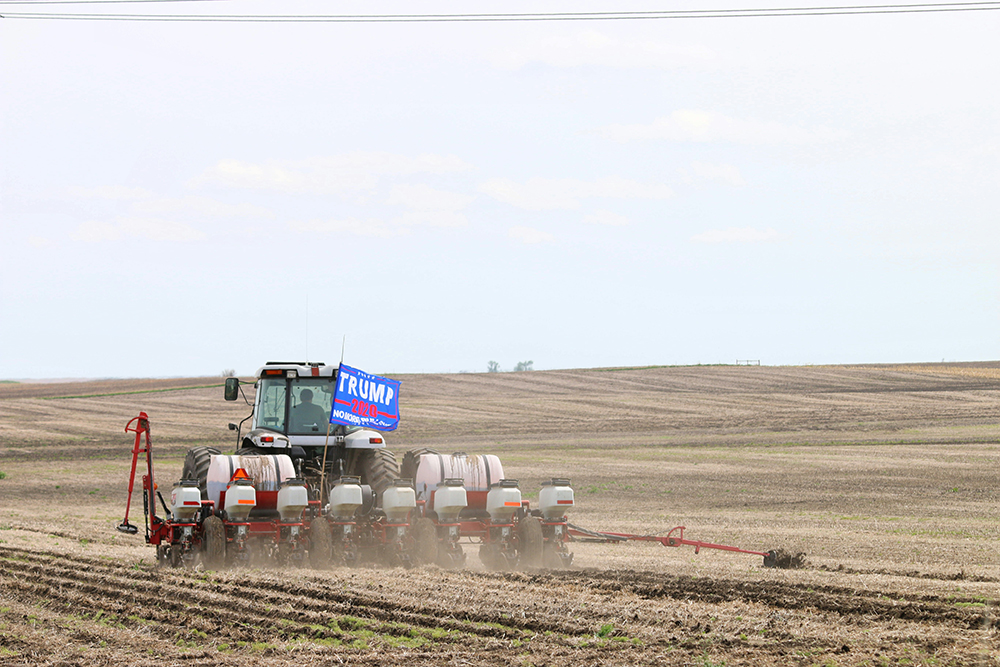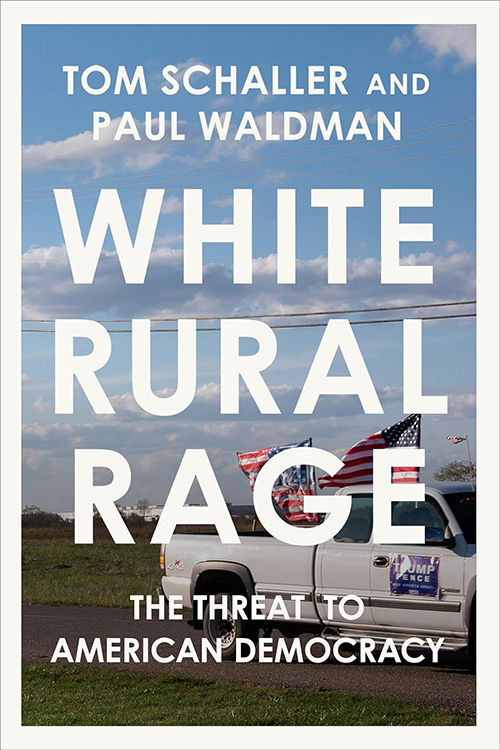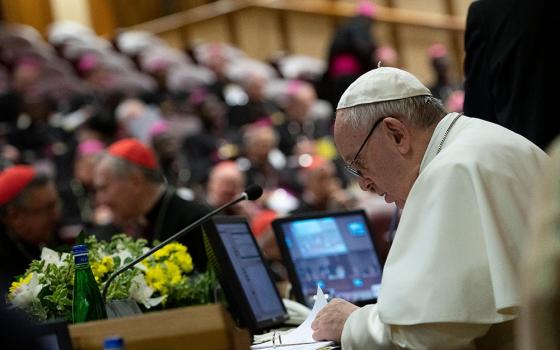
(Unsplash/specphotops)
Who poses the greatest threat to the survival of American democracy today? Tom Schaller and Paul Waldman argue in White Rural Rage: The Threat to American Democracy that the answer is clear: rural whites have moved the nation to the precipice of political collapse.
The authors write that "more than at any point in modern history, the survival of the United States as a modern, stable, multi-ethnic democracy is threatened by a white rural minority that wields outsize electoral power."
Since before its founding, many Americans — including those at the apex of political power — embraced myths that guided our political trajectory. Fears about the alleged dangers that cities posed to society shaped our early political development and public policy. National leaders warned about corruption fostered in cities and prescribed laws that privileged rural above urban life.
The federal government therefore created public policies that promoted small scale farm development. They confiscated lands from Native Americans to redistribute to white settlers. They bought the Louisiana Purchase to provide plots to generations of farmers not yet born. They enacted the Homestead Act to further open western lands to farmers eager to put their plows in new soil. Schaller and Waldman tell us that 23 federal agencies maintain more than 400 programs to serve rural communities today.
And yet rural whites are furious. Why?
Advertisement
The authors argue that the recent decline in rural whites' material well-being lies at the heart of their rage, and write clearly and sympathetically about the struggles faced by this demographic. Drawing from economic and social science data, as well as from regular visits to various rural areas, the book concludes that rural American economies declined precipitously when industries left the regions for the promise of greater profits overseas, and as agribusinesses gobbled up family farms (along with the subsidies that make those industrial farms so profitable). Economic idleness and even despair contributes to an epidemic of opiate abuse that takes the lives of tens of thousands of mostly young rural whites each year.
The economic dislocation set rural whites adrift and in desperate search of cures for their ills. Many fled rural areas for the cities: two-thirds of rural counties lost population between 2010 and 2020. Those who stayed embraced the Republican Party. And yet Republican legislators at the state and national levels spend little time seeking solutions to those problems — and in fact promote the exploitation of rural whites that forms the foundation of their material demise.
Those familiar with Thomas Frank's What's the Matter With Kansas? will recognize the argument. Republicans garner fervent rural white voter support, then go to their respective legislatures and support policies that expedite the departure of rural manufacturing industries — provide tax breaks for corporations and billionaires — and deregulate the industries that defile the countryside in which rural whites reside. Republican representatives make it harder for unions to organize rural workers even as those legislators facilitate the agribusiness consolidation that makes unions so necessary.
Why do rural whites follow this script so consistently and ardently? Unlike Frank, who dismissed the role that racism played in Kansas, Schaller and Waldman see racial prejudice at the heart of Republican successes at the polls.
The evidence they provide is more than convincing. According to Schaller and Waldman, rural whites aim their rage at their economic struggles at African Americans and immigrants rather than at those who actually control the economic levers. The authors note that rural whites exhibit extraordinarily high degrees of racial antipathy, and quote sociologist Robert Wuthnow who sees racism at the heart of white resentment. Wuthnow argued that rural whites sense "that things are going badly and the impulse is to blame 'others.' "

(Unsplash/Laura Seaman)
Donald Trump and JD Vance sense this racial antipathy and stoke it. Though Schaller and Waldman wrote this book before recent developments in the presidential race, their analysis helps to explain why the Republican candidates have eschewed the "dog whistles" that Republicans used to rely on in favor of unequivocal racist rants. If Trump at one time posed questions about Barack Obama's birthplace, he now repeatedly shouts lies about Haitian immigrants eating dogs and cats.
The rural white rage displayed in recent years would pose little threat to American democracy if they did not wield political power disproportionate to their numbers. According to White Rural Rage, rural whites make up only about 15% of the nation's overall population yet exercise extraordinary cultural and political power as the electoral college and the U.S. Senate skew toward rural whites in antidemocratic ways.
Historians know the nation has been down this road before. Any deep reading of the political landscape a century ago will find the discourse eerily familiar to today's Republican attacks against immigrants, worries about socialism and warnings about the dangers of religious minorities undermining Protestant Christianity's cultural and political dominance.
These fears gave the Ku Klux Klan renewed popularity, control of multiple state legislatures and the power to deprive a Catholic candidate of the Democratic nomination for president in 1924. Yet Schaller and Waldman note that the 1920s Klan never stormed the U.S. Capitol building or championed for president a man who promised to become a dictator (if only for one day).
Any number of electoral reforms might negate rural political privileges and move the nation toward the democratic ideal that a majority of Americans prefer and, until recently, thought we already had. Instead we are left perilously close to the demise of the experiment in democracy that so many American worked so hard to nurture.








